Flying robot "GimBall" that can continue flying even among obstacles

Flying the sky freely up, down, left and right freely using 4 rotorsQuad CopterYaEquipped with a rotor in a spherical frameAlthough radio controlled helicopters etc. are on the market, "GimBall" which is expected to be diverted also for advanced applications by dramatically increasing its stability is being developed.
Insect-inspired flying robot handles collisions, goes where other robots can not | Robohub
http://robohub.org/insect-inspired-flying-robot-handles-collisions-goes-where-other-robots-cant/

Looks like this. The body part equipped with the rotor, the control system, the stabilizing board etc. necessary for flying is contained in the sphere which becomes the outer shell part composed of the same pentagon and hexagon as the soccer ball.
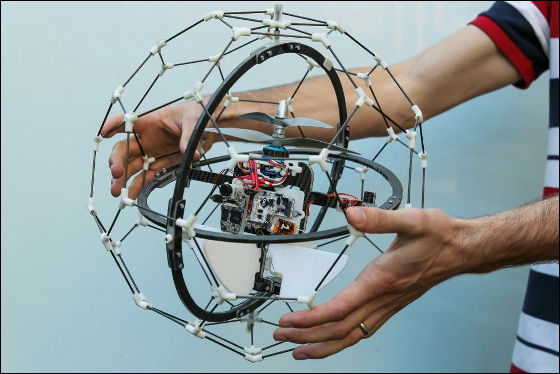
Characteristic is how to mount the main body. Just like gyroscopes and compassesGimbalIt is mounted on the top and the structure of the outer shell is hard to be transmitted to the inside.

It is this kind of feeling that the difference when hitting an obstacle was represented by animation. The conventional type on the left is unstable because it affects the orientation of the rotor when hitting an obstacle, whereas the right GimBall is a mechanism that can keep stability as the outer shell rotates and shocks.

A movie that actually shows how this GimBall fly in the sky has been released on YouTube.
An insect-like, crash-happy flying robot - YouTube
What is developing this GimBallSwiss Federal Institute of Technology LausanneAdrien Briod belonging to Laboratory of Intelligent Systems.
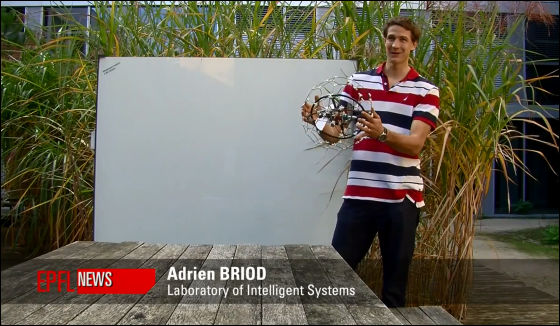
Due to the ability to be resistant to obstacles, in the stairs and ... ...
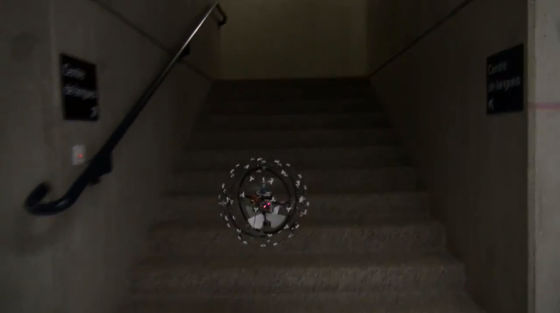
There is no problem even if you hit indoor glass.
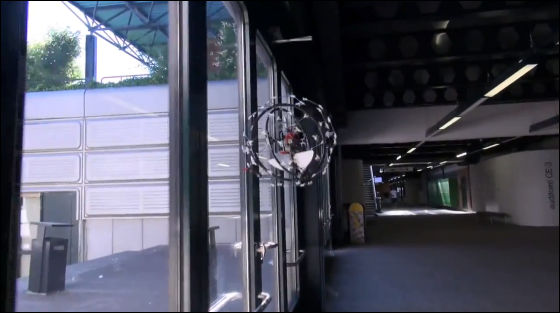
You can also fly inside such a framework of steel.
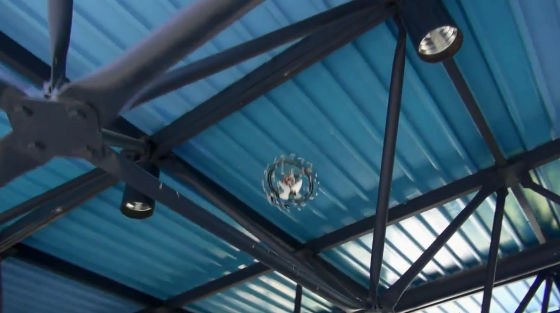
The secret is this gimbal. The outer shell part rotates freely, and it has a structure that does not transmit shock to the inside.
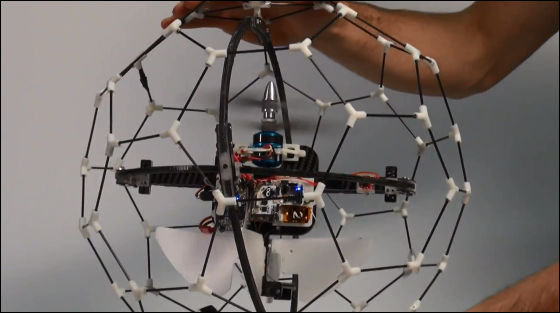
For weight saving, the frame part is made with carbon fiber. Also, in order to maintain the balance of the main body, electronic boards and rotors are designed to have center of gravity at the center with high accuracy.
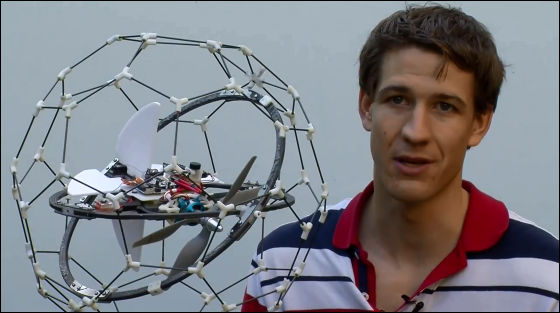
In the future, there seems to be a plan to want to be able to be used as a robot to conduct surveys and searches in places where people such as disaster sites can not approach.
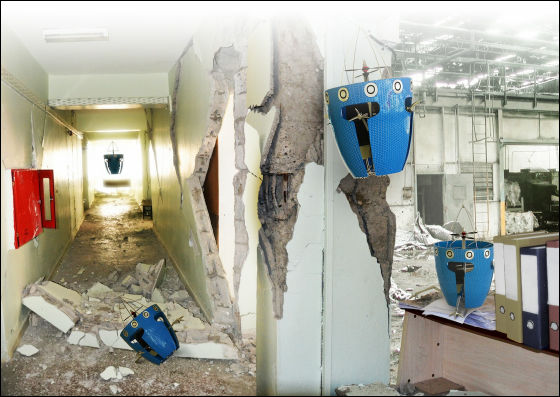
For Japan where typhoons and earthquakes occur frequently, I would like to expect the potential as a device for disaster investigation.
Related Posts:







